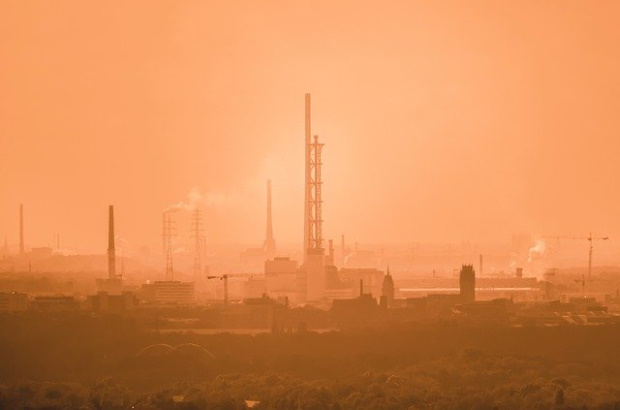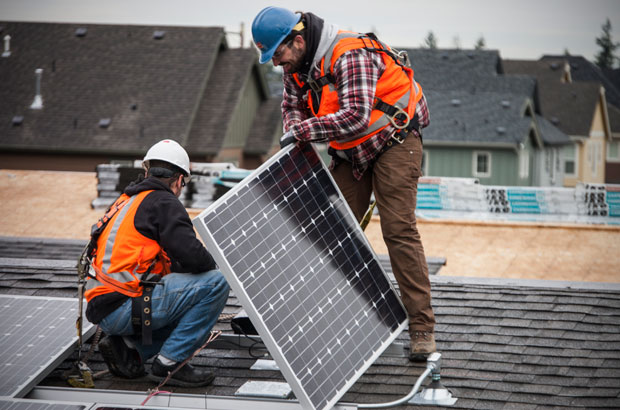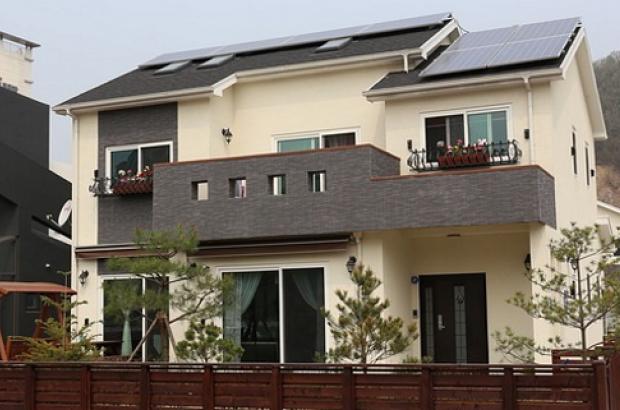A climate protection plan that exempts gas power plants(?!)

“Transition is inevitable. Justice is not.”- Quinton Sankofa, Movement Generation
Climate disruption isn’t an “environmental” issue in the usual sense. It’s a basic matter of social and economic justice.
The impacts of climate change generally hit first and worst on those who do the least to cause it and are the most vulnerable to the consequences. And the primary cause of climate change–fossil fuel extraction, transportation and combustion–takes a heavy toll on the health and well-being of communities of color, indigenous people, and low-income communities.
So addressing the climate challenge means more than emission reduction, more than simply mitigating environmental impacts of our economic and energy systems. It means rebuilding those systems to deliver sustainable prosperity–economic health that works for a long time and a lot more people.
A clean energy economy can offer that promise. It can produce economic vitality in the present without destroying the future. It can produce shared prosperity, by reducing the concentrated economic power of fossil fuel suppliers, investing in communities, and increasing reliance on abundant local resources.
But this transition won’t be easy or quick. It’s a huge social and economic shift, and that always poses challenges, particularly for those who live closest to the economic margins and those who rely on fossil fuel industries for work. The clean energy transition is about shrinking carbon footprints, but it won’t work unless it’s also about growing:

By: Zach Baker on
The EQC has decided to stack the cap-and-reduce rulemaking advisory committee with fossil fuel and big business interests.

By: Jonathan Lawson on
Biden's climate picks bring experience, grit and a focus on environmental justice. Plus: Who the gas industry is targeting now, and climate book recommendations for the holidays!

By: Gregg Small on
Our climate movement is more unified than ever, but we're reaching a critical point where we must change a lot of things all at once. Let's do this together.

By: Zach Baker on
One major component of the Oregon Climate Action Plan is a directive for the state Department of Environmental Quality (DEQ) to set up a new program to “cap and reduce” climate-harming pollution from Oregon’s large polluters.

By: Gregg Small on
Does it sometimes seem like we're now living in a permanent state of emergency? Because we are. And our need for climate action is anything but a distraction.

By: Jonathan Lee on
Oregon legislators have proposed cutting the state’s only support for many rural and low-income communities to access solar and energy storage for their own roofs.

By: Zach Baker on
We can rebuild and recover in a more just, clean, healthy, and smart way—while creating lots of high quality green jobs along the way. One of those climate-smart and equitable solutions to build back better than before is right in front of us, and all around us: our homes and other buildings.

By: Zach Baker on
Last month, twelve state agencies delivered their plans to carry out the Governor’s Executive Order on climate. Here's what we know so far.

By: Victoria Paykar on
Shifting to electric vehicles economy-wide is one of the fastest ways we can clean our air. However, we do not experience harmful air pollution equally, so we must ensure that communities facing disproportionate toxic air pollution are prioritized for transportation programs and infrastructure that improve air quality.

By: Zach Baker on
As we head into the 2020 session, we’re doing everything we can to ensure the Legislature passes a strong cap and invest policy. We’re also working on a number of other complementary bills to move the ball forward on climate – some of which are also unfinished business from last session.
Join our email list to learn about what we do and how to get involved.